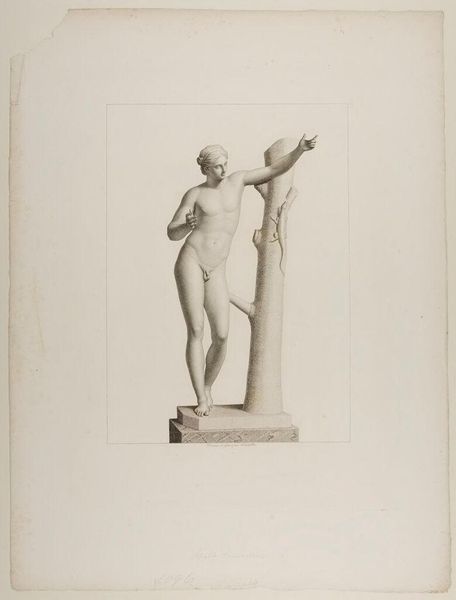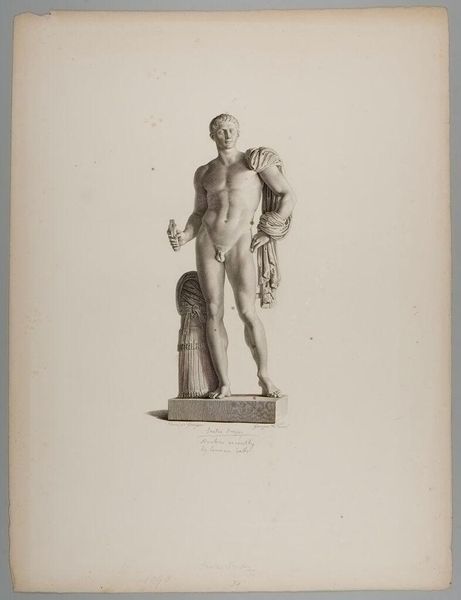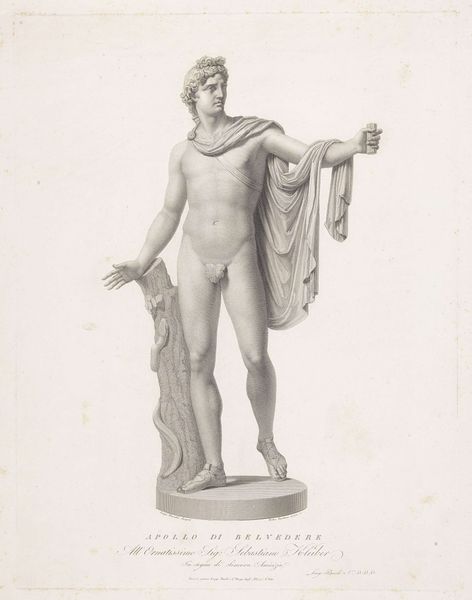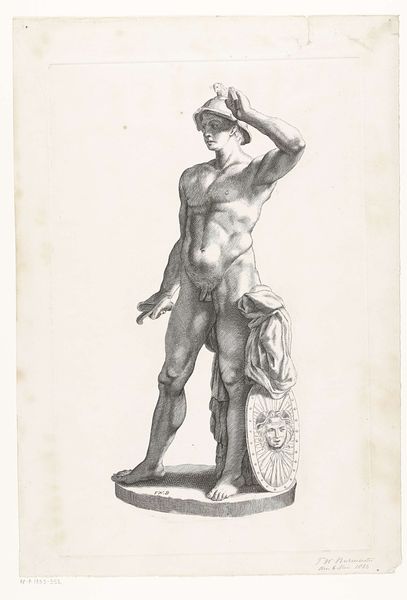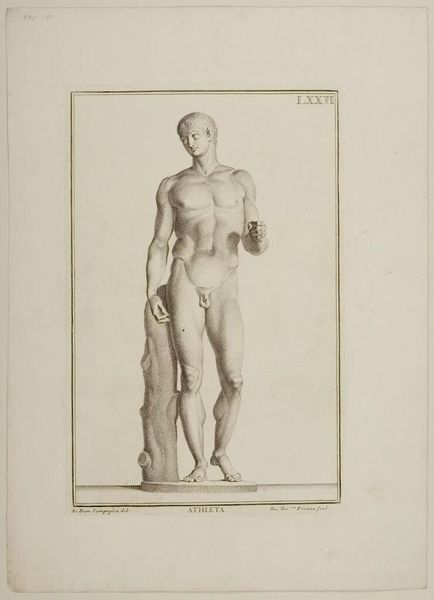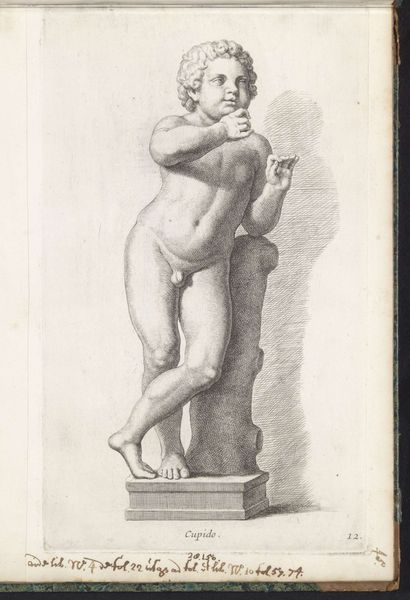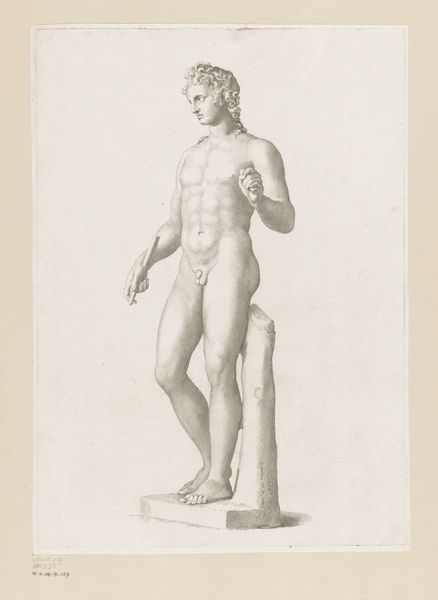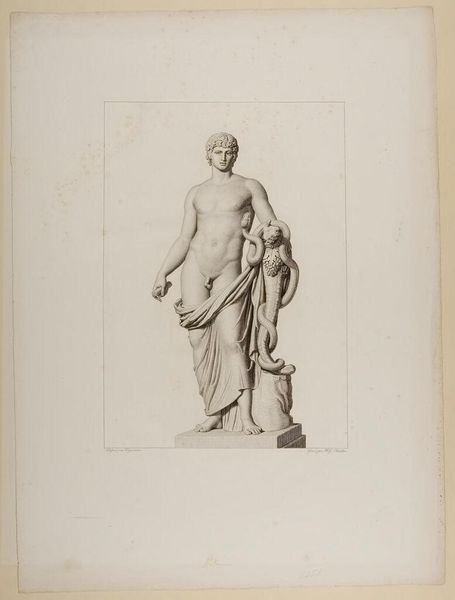
Copyright: CC0 1.0
Curator: Let's discuss Carlo Gregori's etching, "Statue Satyrus." What's your immediate take? Editor: There's an unsettling arrogance in his pose, a confidence that feels performative, almost mocking. Curator: Satyrs are liminal figures, bridging human and animal, embodying instinct and desire. The grapes he clutches signify Dionysian ecstasy. Editor: Yet, he's literally on a pedestal. That elevated position reinforces societal power structures, gender constructs, and historical objectification of the male form. Curator: Perhaps. I see the Satyr as a symbol of raw, untamed life force, a rejection of societal constraints, like Pan. Editor: Even in rebellion, there's a historical narrative of exclusion being perpetuated—who defines what is "untamed," and who bears the brunt of that label? Curator: It certainly holds complex layers. Editor: Indeed. This piece invites us to question the stories we've inherited, and whose voices they amplify.
Comments
No comments
Be the first to comment and join the conversation on the ultimate creative platform.

